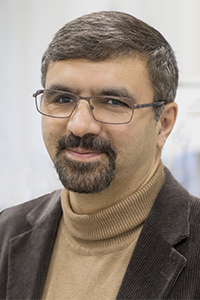Characterization of zygomycetes cell wall material for integration into nonwoven products
Start date: 2007-03-01
End date: 2010-03-01
This project deals with production of biological superabsorbents from zygomycetes fungi for application in non-woven products. Superabsorbent polymers (SAP) are highly hydrophilic polymers which are able to absorb aqueous solutions up to hundreds times of their weight. They can be used in personal care and hygienic products. Nowadays polyacrylates are the most common materials for production of SAP. However attentions recently have been paid to application of biological SAP due to possibility of recycling and composting.
In this project the biopolymers from the biomass of zygomycetes fungi are aimed to be converted to superabsorbents. The cell wall material (CWM) of this group of fungi contains biopolymer chitosan. It is not a SAP by itself, but its absorption capacity is going to be increased in this project to a level as synthetic SAPs. Furthermore chitosan and CWM have good antimicrobial properties and the final products (e.g. diapers) containing CWM can be used for a longer time without irritating odor. The focus of the project is on characterization and modification of CWM in order to get improved water binding capacity (WBC) for application in non-woven products. Proteins are the second group of biopolymers of zygomycetes fungi that can be converted to superabsorbent.
In this project fungal biomass is treated with alkali solution to separate the CWM from the other materials in the cell. CWM makes around 20% of the cells and is recovered as the alkali insoluble material while the proteins make 50% of the cells and are extracted and solubilized in alkali solution and can be recovered by precipitation. For both CWM and proteins, the process is followed by a modification step in which hydrophilicity of the materials is improved. Then the materials are dried. The WBC of the final products is comparable with WBC of polyacrylates and they can be added to non-woven products as the biological superabsorbents.
in collaboration with Medical Equipment Development AB (Sweden) and Rexcell AB (Sweden).
Project Leader
Mohammad Taherzadeh
Professor
033-435 5908


